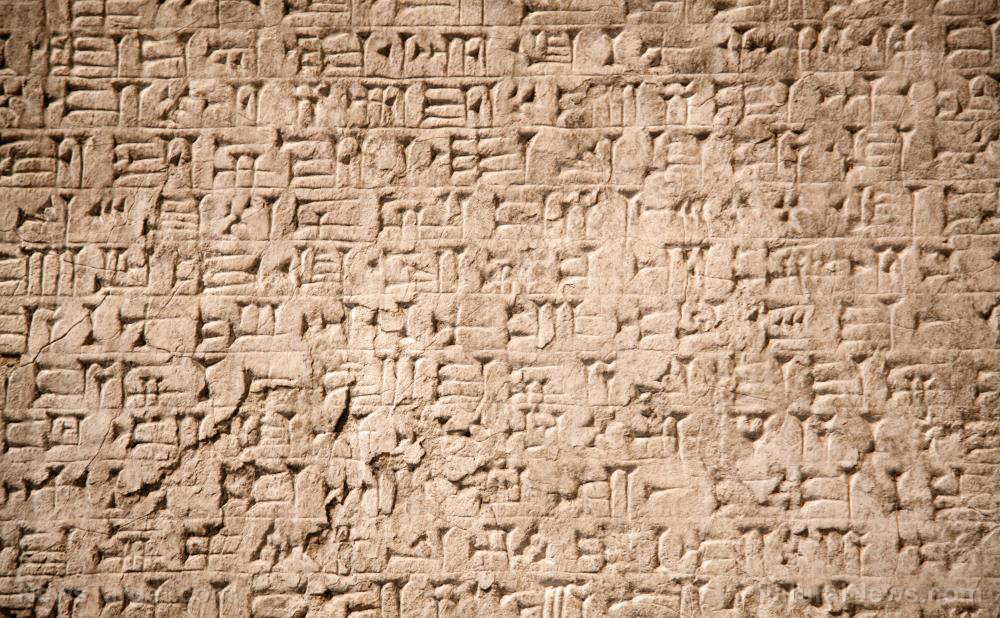
Researchers from the Austrian Academy of Sciences and the Hebrew University of Jerusalem call the inscription "a missing link" because it connects the earliest known alphabetic writing to the Levantines' alphabetic script.
"Dating to the fifteenth century B.C., this inscription is currently the oldest securely dated alphabetic inscription from the Southern Levant," the researchers wrote.
The gap in the alphabet's history
Inscriptions found in Egypt are the earliest evidence of alphabetic script, or writing that uses a set of letters to represent sounds. These inscriptions were derived from Egyptian hieroglyphs and were attributed to Semitic-speaking Canaanites who worked in Egyptian mines.
The alphabet used in these inscriptions eventually spread in the Southern Levant, as suggested by later examples of alphabetic writing that were found in the region. The alphabet was then transformed into the Phoenician alphabet, which the Ancient Greeks adapted to create the first alphabet with vowels. Eventually, the Romans caught up with the Greeks and developed the Latin alphabet, which is the basis for modern-day alphabets.
Those Southern Levantine examples dated back to around 1300 B.C., while the inscriptions found in Egypt dated back to around 1980 B.C. to 1800 B.C. This left a significant gap in time between the older hieroglyphic inscriptions and later inscriptions.
Dating and deciphering an ancient potsherd inscription
In 2018, archaeologists discovered a potsherd near an ancient fortification in Tel Lachish, a prominent Bronze and Iron Age site in the Southern Levant. The remains of barley were also found alongside the jar fragment and were determined to have been deposited at about the same time as the latter. Radiocarbon dating indicated that the barley was grown around the 15th century B.C.
The shard carried a short alphabetic inscription. The first word consisted of the letters ayin, bet and dalet while the second word had the letters nun, pe and tav. All of these letters were part of the early Semitic alphabet used one time on the Arabian Peninsula. They could be found today in the Hebrew language, though modern-day symbols looked different.
The inscription's scribe used hieroglyphic symbols to represent some of the letters. For example, ayin was represented with a figure that looked like an eye.
"As in most early alphabetic inscriptions from the Southern Levant, the letter is shaped like a circle, resembling an iris with the pupil missing," the researchers wrote. (Related: Scientists uncover "invisible" ancient Hebrew inscription that can only be seen with advanced technology.)
It wasn't clear what the words meant but they might be part of two names. The letters in the first word could spell out "slave" but this didn't mean that the inscription referred to an enslaved person. The researchers noted that the surviving letters were probably part of longer words since the combination of those letters that spelled out "slave" might have been used in many other words.
The researchers called the inscription a missing link because it dated back to around 3,450 years ago (1550 B.C.). That was after the first alphabetic symbols appeared in Egypt around 3,900 years ago (1900 B.C.) but before they appeared again in the Levant around 3,300 years ago (1300 B.C.).
Benjamin Sass, an archaeologist from Tel Aviv University who was not part of the study, opined that the study would likely stir up a debate among historians. Sass, an ancient civilizations scholar who has written extensively about the alphabet's early history, explained that the dating of the barley might or might not be an accurate date for the inscription. Among many reasons why, the barely might have been harvested after the jar.
"The data published so far makes this a possibility, but by no means a certainty," Sass told Live Science.
Artifacts.news has more about ancient civilizations and the fascinating relics they left behind.
Sources include:
Please contact us for more information.























